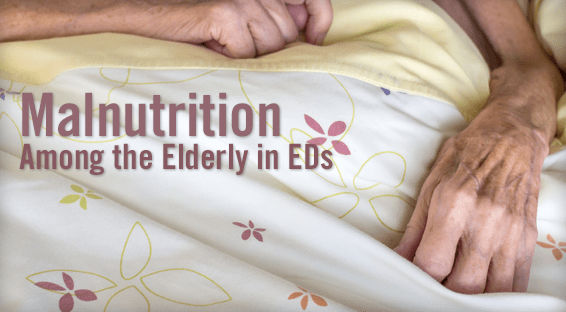According to published research, malnutrition is a common but underdiagnosed condition among older adults and has been linked to physical and cognitive decline, a lower quality of life, and a higher risk of death. Studies suggest that the elderly are particularly vulnerable because of loss of appetite, comorbidities, medications, and environmental factors. These factors can influence the availability and desirability of food and the ability to eat and absorb nutrients. Although there are accurate instruments to screen for malnutrition, implementation of these screening protocols is often inconsistent in different healthcare settings, including EDs.
Taking a Deeper Look at Malnutrition
In a cross-sectional study published in Annals of Emergency Medicine, Timothy F. Platts-Mills, MD, MSc, and colleagues assessed the feasibility of screening for malnutrition and its prevalence among cognitively intact older adults in the ED. The investigators found that more than half of older adults who visited the ED were either malnourished or at risk for malnutrition. “We found that 16% of elderly patients in the ED were malnourished, which is higher than malnutrition rates seen in the community,” says Dr. Platts-Mills. “We also found that despite clear signs of malnutrition or risk of malnutrition, more than 75% had never previously been diagnosed with malnutrition.”
Importantly, cases of malnourishment did not appear to result from a lack of access to healthcare, critical illness, or dementia. Nearly all patients had a primary care physician, lived in a private residence, and had some type of health insurance, and more than one-third had a college education. The prevalence of malnutrition was not appreciably different between men and women or between those living in urban and rural areas.
Contributing Factors to Rates of Malnutrition
Rates of malnutrition were highest among patients with symptoms of depression as well as those who lived in assisted living, experienced difficulty eating, and reported difficulty buying groceries (Table). Difficulty eating was mostly attributed to denture problems, dental pain, or difficulty swallowing. Dr. Platts-Mills says these contributing factors can be addressed in some instances. For example, depression treatment can be initiated if symptoms are identified. Also, programs like the Supplemental Nutrition Program, Meals on Wheels, and other community-based food charities can be helpful for those reporting difficulty buying groceries.
Dr. Platts-Mills says that increased awareness of malnutrition among older adults in the ED is needed so that efforts can be made to improve care. “We should explore multifaceted interventions to address this issue,” he says. “Systems should be put in place in ED settings to deal with malnutrition and the factors associated with it. Emergency physicians have an opportunity to screen and intervene in ways that may be helpful without being too costly.”




 TimH
TimH